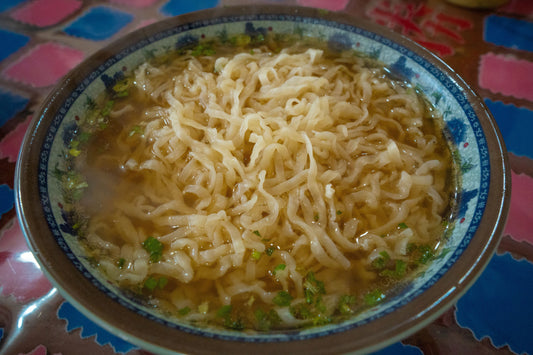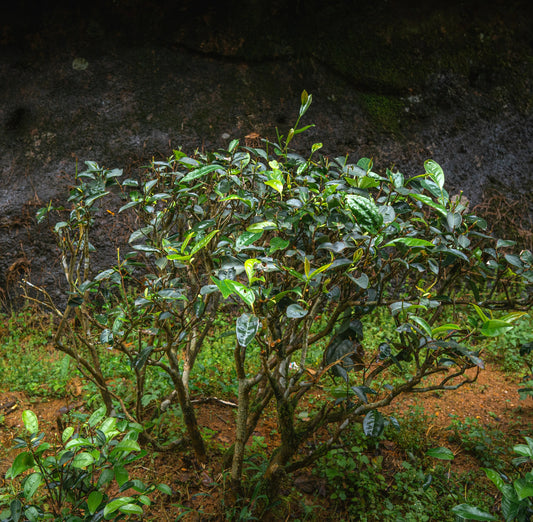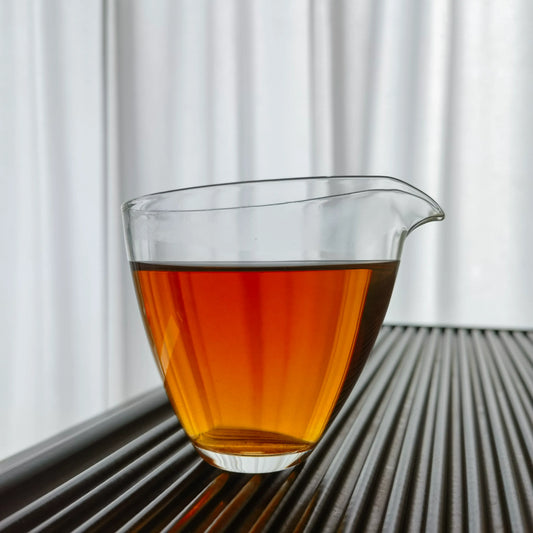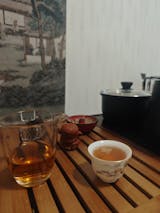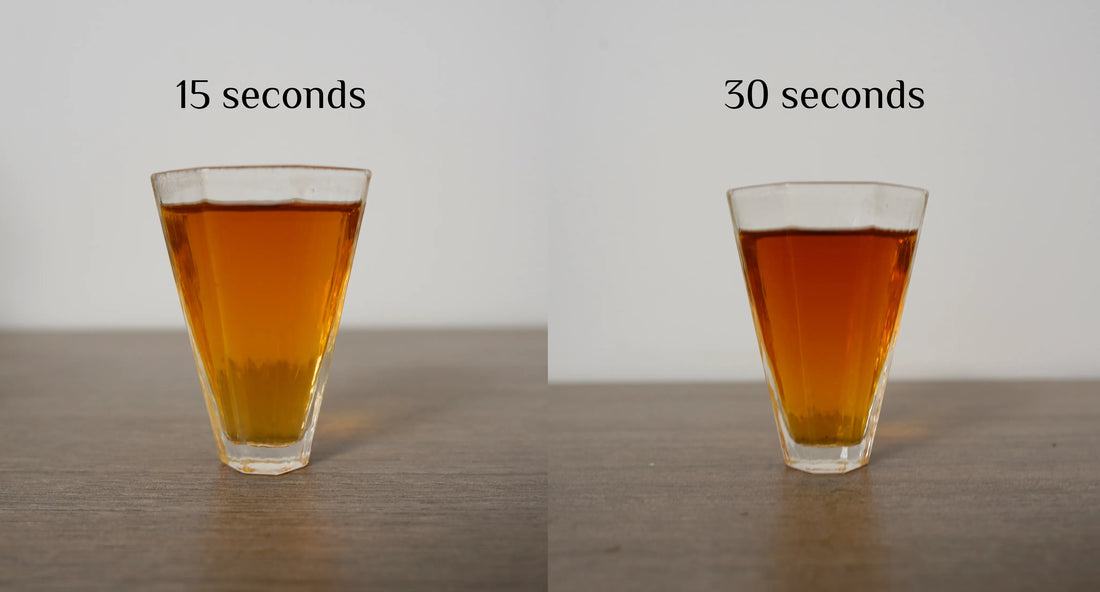
How do you make a great cup of Wuyi Rock Tea?
A lot of friends ask me and Katniss, “People keep saying Wuyi rock tea tastes rich and complex, but why do I only get bitterness that’s hard to swallow?”
In fact, most of the time, it’s not because the tea leaves are bad, it’s the brewing method that needs some improvement. In this post, I’ll break down 4 key factors that affect how Wuyi rock tea brews. Hopefully, it’ll give you a fresh perspective on this amazing tea.
1.Water for Brewing Wuyi Rock Tea
When it comes to brewing yancha, the water you use matters. It can make or break the tea’s flavor and aroma. Here are some common types of water used for brewing Wuyi rock tea, and what makes each one unique.
Mountain spring water is the most ideal. It has abundant mineral and trace elements, soft quality, and sweet taste. It can fully express the complex aroma and layered taste of rock oolong, making the tea smooth and full.

A winding mountain stream in Rooteas family-owned tea farm
However, spring water isn’t always easy to get, even in Wuyishan, not everyone has access to a fresh spring. But don’t worry, there are other more accessible options coming up.
Bottled mineral water is a great alternative to spring water. It’s been processed and contains a stable level of minerals, offering a clean and refreshing taste. While it may not be as ideal as mountain spring water, it comes pretty close.
Of course, not all bottled waters are created equal. Brands are different, and some are more suited to your taste and mineral content than others, so experiment with a few local brands to find the one that tastes the best with your tea.
Purified water contains almost no minerals or impurities. It’s clean, neutral in pH, and has no off-flavors. Because of its purity, it allows the true character of the tea to shine through, what you taste is all from the leaves themselves.
Tap water is generally not recommended, even though it’s the most accessible option for most people. It’s usually treated with disinfectants like chlorine, which can affect the taste and aroma of the tea, leaving the brew with an off-flavor.
If tap water is your only option, you can improve it by using a water filter or by boiling it and letting it cool, this helps reduce some of the unwanted substances in the water.
2.Tea-to-Water Ratio
Rooteas recommends: 5g of tea for every 120ml of water

For this session, we used a 120ml Gaiwan with 5g of Rooteas Rou Gui
If you’ve purchased rock oolong from us, you’ll notice that each packet is already pre-portioned with 5g of tea, which is perfectly matched for a 120ml Gaiwan.
We chose this ratio because it strikes a nice balance. It’s strong enough to bring out the richness of the tea, but not so intense that a small timing mistake makes the brew overly bitter. In short, it’s a forgiving and well-rounded choice.
Of course, this isn’t the only way to brew. If you prefer using 8g of tea with 110–120ml of water, that’s totally fine. Brew it the way you like. After all, tea is meant to please you, not stress you out.
3.Water Temperature

A comparison of Rooteas Rou Gui brewed at the same steeping time but with different water temperatures
There’s a saying in Fujian: “Good tea doesn’t fear boiling water.” Using water at 100°C (212°F) helps fully release the aroma and inner character of rock tea, making the brew rich and flavorful. So if your tea feels a bit flat or lacks aroma, the first thing to check is your water temperature.
I was talking to a friend about his Rou Gui brewing experience. The first couple of steeps were great. He could smell the roasted notes, along with fruity aromas from the fresh roast. But after that, the tea suddenly lost its body, and the aroma faded too.
As we talked more, we realized what had happened. After brewing the first two infusions with freshly boiled water, he paused to enjoy the tea before making the next round, nearly 10 minutes had passed. By then, the water in the kettle had cooled down, and those high-boiling-point aromas just couldn’t come out anymore.
So, try to reboil your water before each new infusion. Your tea will thank you for it.
4.Brewing Time

A comparison of Rooteas Rou Gui brewed at the same water temperature but with different brewing times
For the first 3 infusions of rock tea, it’s best to keep the steeping time between 10–15 seconds. If the tea sits too long, the brew can become overly strong and bitter.
As you continue steeping, gradually increase the time by about 10–20 seconds with each round. Wuyi rock tea can typically be brewed 8–10 times.
And remember, Wuyi rock tea can be steeped 8 to 10 times, and the flavor shifts beautifully with each round. I’ll dive deeper into that in a future blog post.
Feel free to share your thoughts in the comments.
If there are other topics you’re curious about, feel free to let us know.

